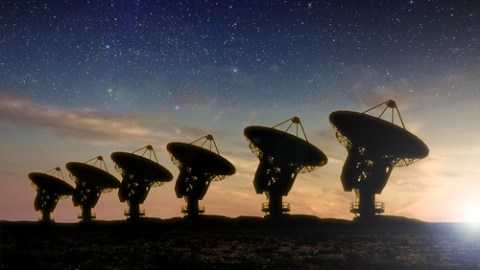A Bold Prediction: E.T. Will Call in Next 25 Years

This article originally appeared in the Newton blog on RealClearScience. Read the original here.
Admit it, the notion that we are alone amongst the stars — all 10,000 billion billion of them — is just a little depressing. Whether we concede it or not, humanity longs for its cosmic significant other.
In many ways, the search for extraterrestrial life is a lot like the early stages of dating. We humans are smitten with a certain someone by the name of E.T., and we are anxiously waiting to hear from him. Will he or won’t he call? What do we say if he does? Will he like us? Is he even a he? Seth Shostak, a senior astronomer with the Search for Extraterrestrial Intelligence (SETI), is betting that we’ll find out soon. He predicts that we’ll hear from E.T. in the next 25 years.
“I’m so sure of this that I’ll bet all of you a cup of Starbucks on it,” he regularly proclaims.
In a recent talk at Boing Boing’s Ingenuity event, Shostak explained why he’s so confident. Much of his reasoning stems from observing technology’s rapid progression. The whirlwind advances in computing power to which we have grown accustomed have bolstered the search for extraterrestrials the same way they have boosted your phone’s ability to play Candy Crush.
“SETI’s speed doubles, on average, every 18 months, because we use digital electronics that obey Moore’s Law. This trend will continue for at least another couple of decades,” Shostak says.
Thus, by 2027, SETI astronomers estimate that they will have eavesdropped on the nearest one million star systems — quite a stellar sampling! This means that if astrophysicist Frank Drake and his equation are correct, and there are a approximately 10,000 civilizations in our Milky Way capable of sending out radio signals into space. (That may be a conservative estimate, considering that there are between 100 billion and one trillion planets in the galaxy, 60 billion of which may be habitable.) We’ll almost certainly hear from one of them by then. But just to make sure that he won’t have to buy mocha lattés for everyone, Shostak tacked on ten years to the 2027 date for his aforementioned bet.
Still, that leaves a mere quarter century at most to get ready for our galactic first date. Though it will be of the long distance variety, we still have to prepare! Shall we brace ourselves for speaking with little green men? Or perhaps cunning, ruthless gray killing machines? Neither, Shostak says. In all likelihood, we’ll hear from super-intelligent machines or brilliant bionic beings. Technological evolution easily outpaces natural evolution, which means that once an intelligent race begins tinkering with technology, it will probably engineer artificial intelligence or potentially even merge alien and machine at a relatively rapid pace.
“I think that if there’s a conscious intelligence out there, it’s synthetic,” Shostak posits. “I think we should assume that when we find a signal, it won’t be coming from a soft, squishy guy behind a microphone, but from one of the true, deep intellects of the universe.”
Shostak believes that we ourselves are on pace to reach such an echelon by the turn of the century. Consider that it took our brains two million years to double in size from one pound to two. Compared to that, the expansion of computer processing power has occurred in the blink of an eye!
Of course, if Shostak’s 25-year prediction proves correct, we almost certainly won’t have time to augment ourselves to the sagacious levels of our extraterrestrial dates. Oh gosh! Hopefully we won’t seem too unevolved!
(Image: Radio Telescopes via Shutterstock)





